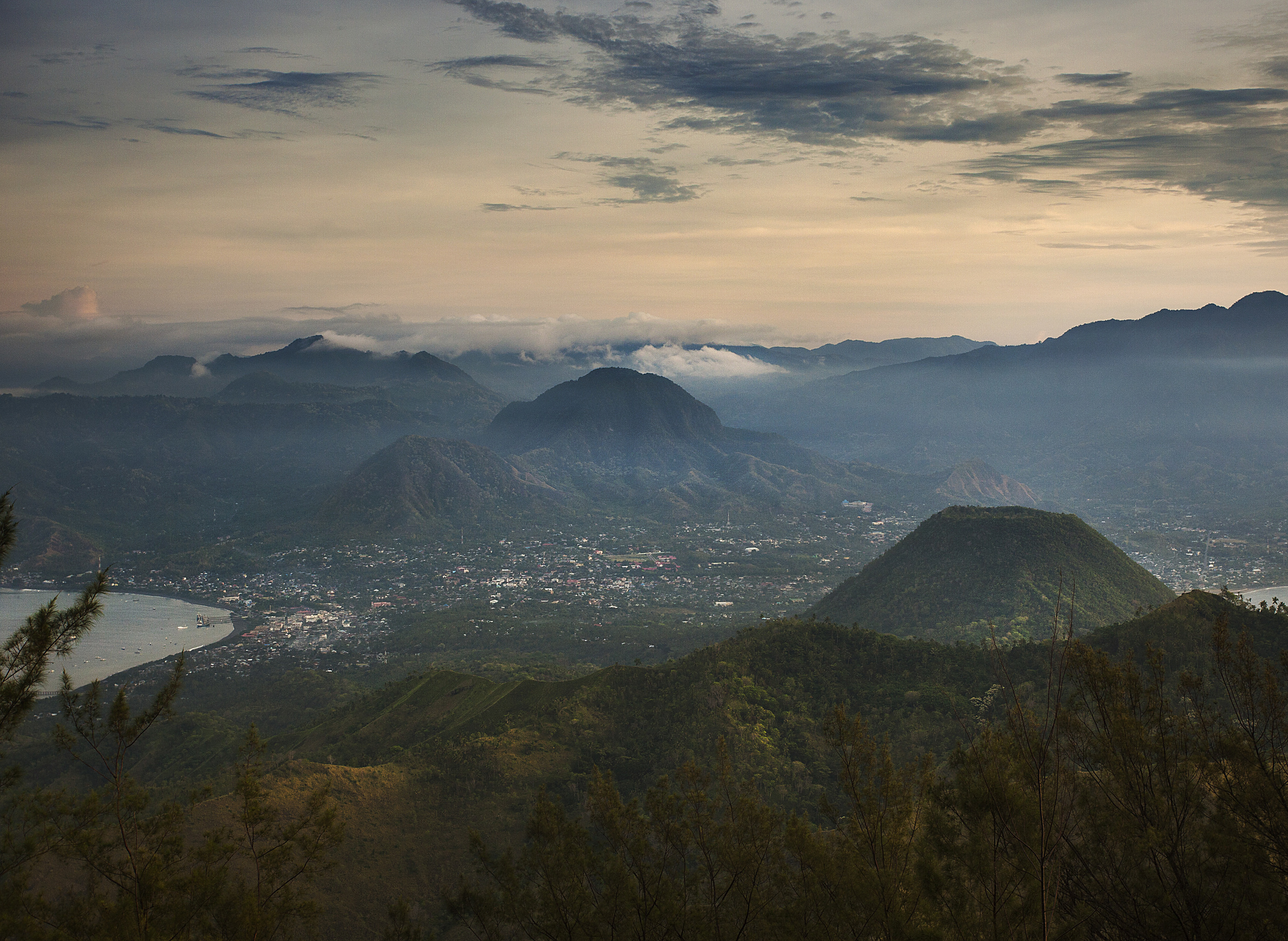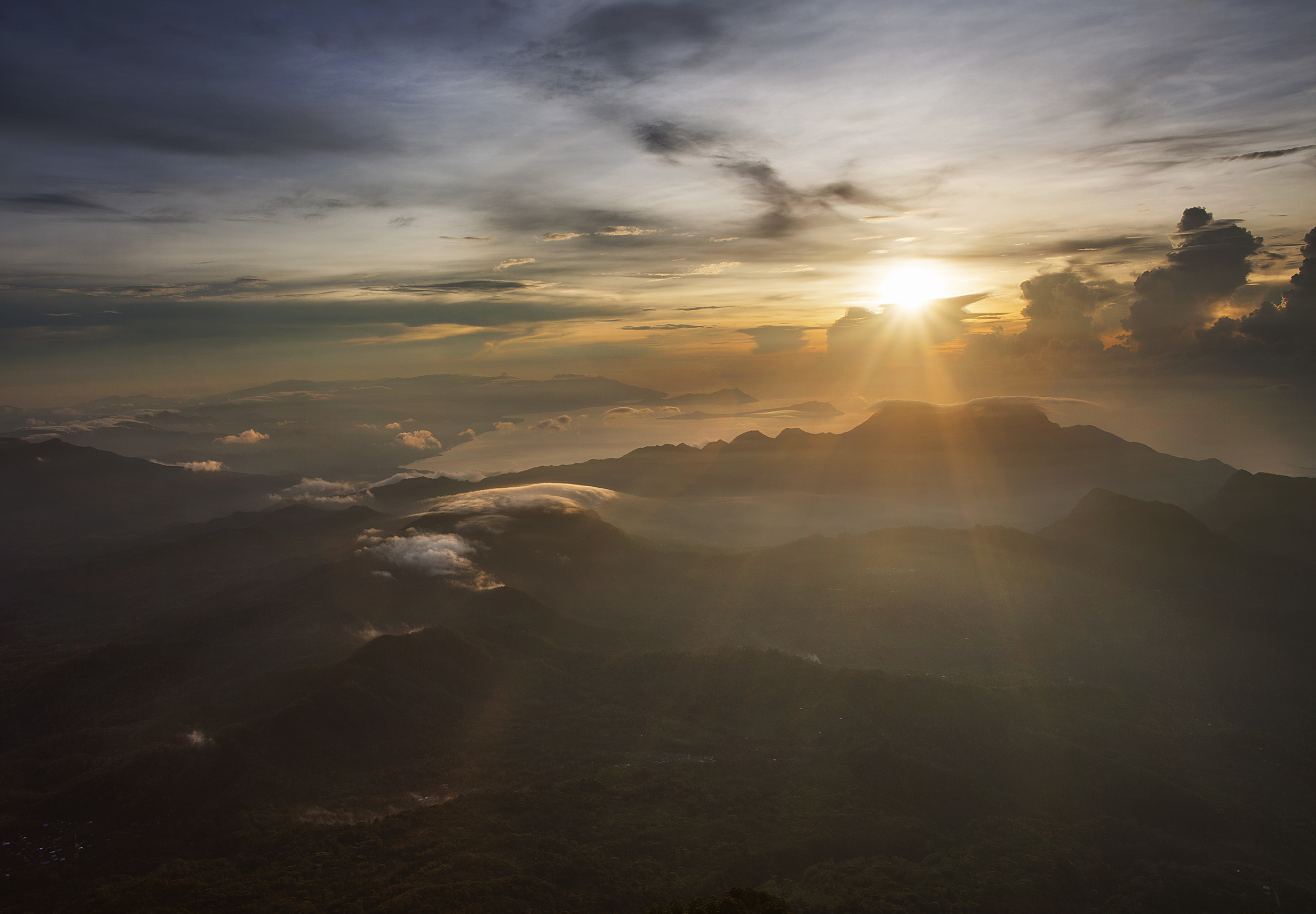the infamous Flor de Cana rum
San Juan Del Sur: Nicaragua’s most popular beach destination and party spot. I arrived with the Australian girl and two Americans guys. The girl was headed to a guesthouse outside of town and the guys were headed to some sort of Irish themed hotel, so I figured I’d check out the hotel and see if they had any rooms. We showed up and the guy who normally works reception wasn’t around, but there was an old guy sitting in the couch, so the guys showed him their hotel booking and I asked if they had any single rooms. We figured this would be a fairly straightforward interaction, but as he spoke the words all just blended together into some form of gibberish that can only loosely be described as Spanish. At some point I just stopped listening and stared at his tongue flapping around his brown teeth. Eventually he got on the phone to speak gibberish to someone else, so I took that as my cue to find a different place to stay. I didn’t really feel like walking around for long, so I found a guesthouse down the street, which had an open room and plopped all my stuff down.
So I did what I normally do when I get to a new city, which is get my camera out and go for a little stroll to get a feel for the place. San Juan is a very picturesque town with nice colonial architecture, a long beachfront, and lush rolling hills dotted with expensive houses as you get farther outside of town. At the highest point there is a big statue of Jesus overlooking the bay, which is apparently the largest of it’s kind in Central America. The main road along the beach is filled with all sorts of bars advertising happy hours, drink specials, and western food, the usual touristy type stuff. Upon first glance the weirdest part was the lack of people on lying on the beach, especially for a sunny afternoon. What you soon realize is that the sand is more of the brown silty variety, and the top layer of it blows all over the place, so sunbathing isn’t very fun unless you’re prepared to get sand whipped in your face and in every exposed part of your body. But despite this little nuance it seemed like it would be a pretty fun place.
Later on I met a British girl in the guesthouse and we decided to go out and grab some food and see what the nightlife is like. We got acquainted with the two beers that any traveler gets to know well in Nicaragua: Tona and Victoria! Both are fairly boring watery lagers of course, with the Victoria being the less water down of two, which would end up being my drink of choice for the rest of my time in Nicaragua. We ended up on the street one off the main drag, which has the smaller backpacker type bars that have better music and more interesting decor than the larger bars on the beachfront. We soon learned after talking to some people that the town is bit a shadier than what originally meets the eye. Apparently it’s fairly well known information that if you wander off the main, well lit, stretch of beach later at night you’ll get mugged. Not like, there’s a chance of getting mugged, but you WILL get mugged. Damn. I’ve known a few places traveling where getting robbed is a definite possibility, but none that come to mind where it’s a more or less a certainty! I’m not in Asia anymore. Well good information to know I guess!
the view overlooking the bay and the town
The next day I gave sunbathing a valiant attempt, which is only really possible with a shirt of over your face to keep the sand from constantly getting in your eyes. I met up with the American guys later on and we decided to hike up to the big Jesus statue. It took about 45 minutes of some fairly steep walking to find our way to the top of the cliff, which we awarded with some really nice sweeping views over the whole bay and of course the up close view of Jesus, who looks like he’s a hailing a taxi. We watched the sunset and then hurried back down to catch some NFL action at the bar. These guys were certainly the heavy drinking type, so we busted out some Flor De Cana, the cheap (but very decent) rum that is famous in Nicaragua, and had a pretty good night out.
I wonder what he can do with those two fingers
The next day was Sunday, and if you ever talk to anyone about San Juan Del Sur, one of the first things they’ll probably ask you is if you did the Sunday Funday?! People even recommend that you plan your SJDS trip around being there on Sunday, just to be there for this weekly event, which basically consists of going to 1 or 2 different pools and getting wasted the whole day. Unfortunately (fortunately?) I would not be partaking in this event as the Packers were on that afternoon and I was not about to miss a Packers playoff game. I found a bar that actually has craft beer and watched the Packers take down the Panthers. Ahh the good times…
Now in San Juan Del Sur the real beauty of the area is supposed to be the beaches outside of town. I booked a shuttle (which is more like a big truck with bench seating in the back) to Playa Maderas. As you’re getting closer to beach the road turns to absolute shit and at one point you’re driving up a bumpy dirt track at what feels like about a 35 degree incline, before arriving at the beach. But it’s well worth the rough drive. Once you get past the surf hostel it’s just a long stretch of almost untouched coastline dotted with some gorgeous rock formations. It’s marvellous. It’s definitely the type of place you feel compelled to stay at. When I reached the far end of the beach I found two guesthouses tucked away just into the trees, so of course I inquired about the availability and was pretty bummed to find out neither had any openings that night or the next. Not even any dorm beds at the surf hostel either. Hmm. So it ended up being just a really nice day trip to Maderas for me, as I took the last bus back into town that evening.
Sunset near Maderas Beach
On my last day in San Juan I rented motorbikes with a couple more Americans (it’s almost kind of weird hanging out with so many Americans while traveling) and we headed to another one of the beaches to do some surfing. Now for me surfing is pretty much always a disaster which entails of me horribly mistiming my paddling and getting smashed by waves for a few hours at a time. And a nice sun burn to boot! So it was pretty much the usual for me. Although there was a nice little period when the actual surfers came in because the waves were getting too small, which was my cue to head out there again, and I actually was able to ride like 2 waves in. Go me! We hit the bars again that night, and that was it for San Juan Del Sur. I’m actually still a little bummed I didn’t get to stay on Playa Maderas at all, but what can ya do? I was off to place called Ometepe the next morning, which is an island with two volcanos in the middle of a Lake, so it’s hard to complain!
goodbye SJDS

























































































































































































































































